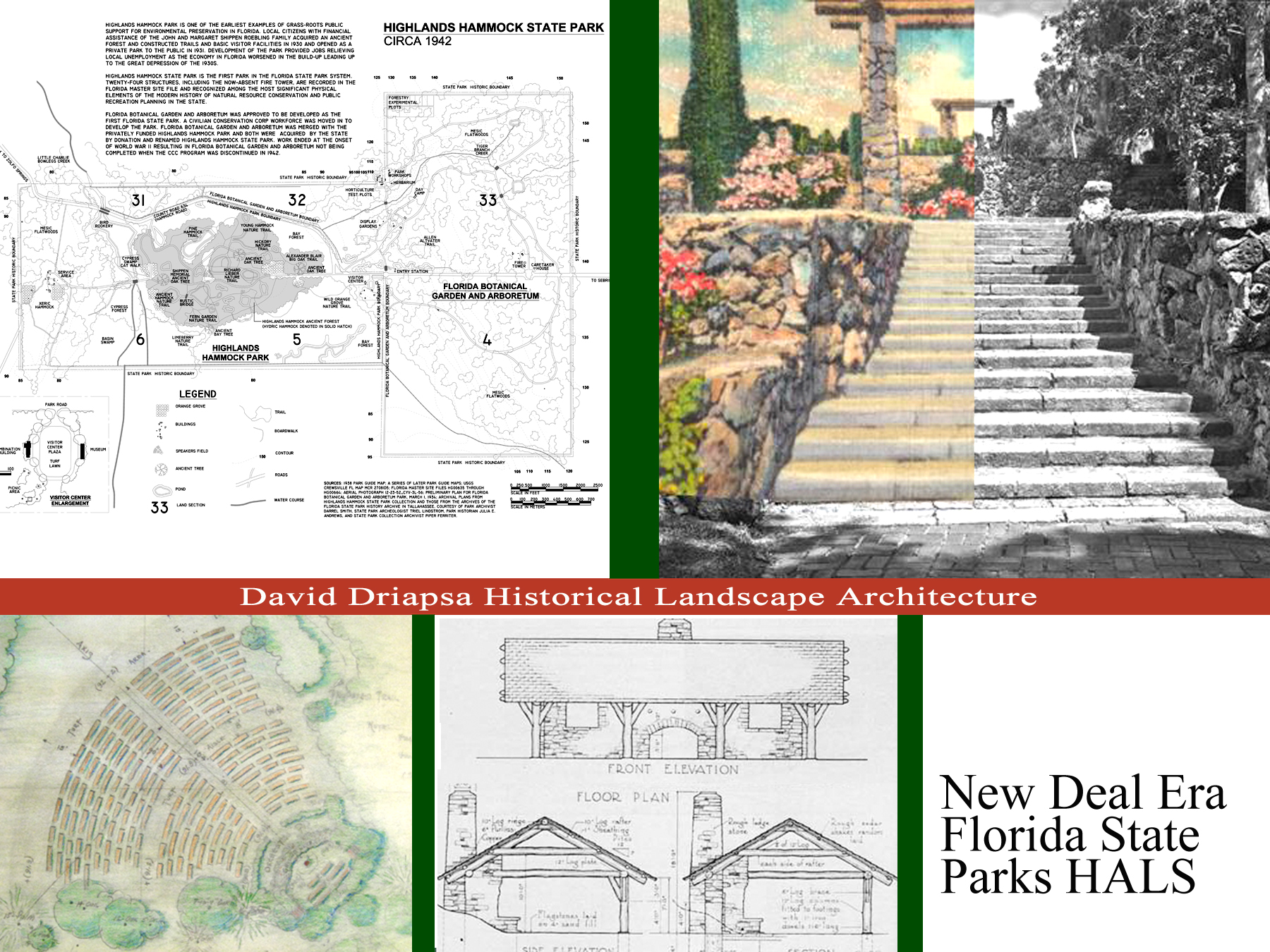
New Deal Era Florida State Parks
Historic American Landscapes Survey
U.S. National Park Service
Nine units of the Florida State Park System were created during the Great Depression with New Deal federal assistance.
The parks were master planned for public outdoor recreation and natural resource conservation. Each park is an adaptation to the native landscape. The cultural landscape character of each park is unique from its adaptation to the landscape. The cultural landscape of each park is the largest cultural resource in terms of acreage and number of components. The buildings, structures and objects of each park are designed in the Rustic Style derived from National Park Service and National Forest Service pattern books.
David Driapsa led a team of landscape architects from the ASLA Florida chapter and served as historian to document these nine parks. The submittal to the National Park Service HALS Challenge won a national honorable mention.
The cultural landscapes of these nine Florida state parks were master planned and developed to enhance recreation, tourism, and nature conservation under the federal economic relief of the New Deal from 1933 to 1942.
The federal Civilian Conservation Corps and Works Progress Administration constructed nine Florida state parks: Florida Caverns State Park, Fort Clinch State Park, Gold Head Branch State Park, Highlands Hammock State Park, Hillsborough River State Park, Myakka River State Park, O’Leno State Park, Ravine Gardens State Park, and Torreya State Park.
Together, these nine parks are recognizable as a type - a New Deal era Florida state park. The master planning of each park responded to the features of the native environment, leaving no two cultural landscapes as identical. It began with well-chosen units of land for each park, then adapting the park recreational and conservation program to the place.
The passage of time, the changing needs and expectations for Florida parks, as well as better understanding of conservation have modified the original purposes of the parks, but the character and features of this New Deal era legacy remains remarkably authentic.